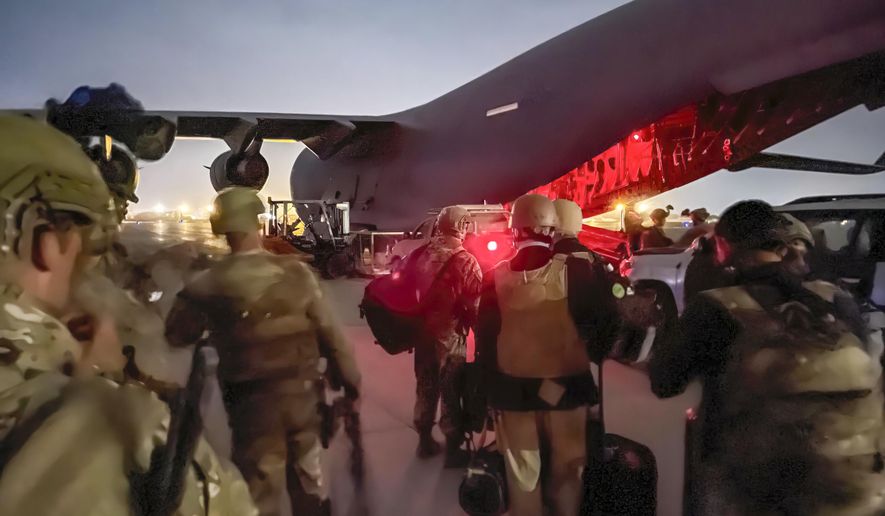The Air Force plans to launch a live cruise missile dropped out of the back of a cargo plane before the end of the year as part of “Rapid Dragon” — a program to turn the lumbering military aircraft normally used to haul troops and equipment into lethal platforms.
Lockheed Martin and the Air Force have already dropped Rapid Dragon munition pallets from C-17 and EC-130 aircraft high above the New Mexico desert. The test armaments that were released during the experiment were aerodynamically identical to the long-range cruise missiles that would be used in battle.
Scott Callaway, Lockheed Martin’s director of advanced strike programs, said the Rapid Dragon tests represent “a big step toward showing the feasibility” of a palletized strike mission: from rolling the missile pallets onto an aircraft to in-flight missile release.
In both test flights, crews pushed the missile-carrying pallets out of the back of the C-17 and EC-130. Once stabilized by a parachute, the pallets released surrogate missiles in quick succession, officials with Lockheed Martin said. The second part of the test involved a ground crew transmitting new targeting information to the Rapid Dragon system during the flights.
Bradley Bowman, senior director of the Center on Military and Political Power at the Foundation for Defense of Democracies, said Rapid Dragon isn’t a replacement for strategic bombers, but could emerge as a useful complement.
“The potential addition of capacity in terms of launch platforms is very important,” Mr. Bowman said. “This really opens up a whole genre that is interesting and potentially helpful for us.”
Rapid Dragon could be a “game-changer,” especially in a scenario such as a Chinese seaborne invasion of Taiwan. It could offer another way the Air Force could bring more muscle to the fight, said David Ochmanek, a research analyst at the RAND Corporation.
“We’re talking about the need to deliver on the order of 1,000 or more anti-ship missiles into a highly contested battle space. That’s a pretty demanding criteria,” Mr. Ochmanek said. “The targets of greatest interest in the opening phase of that war are moving — they’re ships. They’ve accounted for that in the concept with the avionics package they drop into the airplane.”
Not only do Rapid Dragon’s backers see it as a technological breakthrough, but the program could also be a money-saver. The cost is “orders of magnitude” less than buying a new airplane, Mr. Ochmanek said.
“It’s very modular. There are no modifications to the jet. It’s not like it has to go back to the manufacturer,” he said.
Mr. Bowman said he would ultimately like to see the concept and the technology shared with allies such as Japan, India, and Australia once it is sufficiently mature. But there is a concern: In a great-power conflict, most military cargo aircraft will be busy with their primary mission of shuttling equipment and troops from one place to another on the battlefield, he said.
“For a major contingency or war, we certainly don’t have enough cargo capacity,” he said. “That might limit the number of cargo aircraft available to conduct a cruise missile launch mission.”
• Mike Glenn can be reached at mglenn@washingtontimes.com.




Please read our comment policy before commenting.